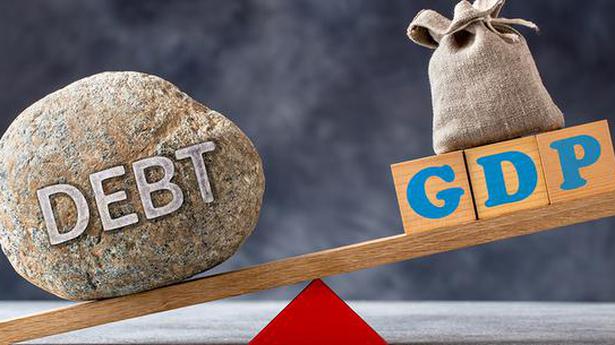Tamil Nadu should aim for public debt-GDP level of 18.36%: Study
Debt sustainability is possible only if fiscal deficit is brought down to 2%, says a Madras School of Economics paper
Debt sustainability is possible only if fiscal deficit is brought down to 2%, says a Madras School of Economics paper
Tamil Nadu will be able to achieve public debt sustainability only if its fiscal deficit is brought down to 2% of the Gross State Domestic Product (GSDP) from 2023-24, according to a recent working paper published by the Madras School of Economics (MSE).
This can be achieved through revenue augmentation or expenditure containment, or both. “Revenue augmentation within the limited scope of the State is possible through better tax compliance, revision of tax on transport (motor vehicle), and by augmenting non-tax revenues. On the expenditure side, it is inevitable to cut down on unproductive subsidies and expenses, besides better targeting of welfare schemes through efficient data management,” says the paper authored by K. R. Shanmugam, Director and Professor, MSE, and K. Shanmugam, former Chief Secretary, who was the State’s Finance Secretary for over nine years.
At the beginning of the current financial year, the State government projected the fiscal deficit at 3.17% for 2023-24.
Pointing out that the current level of debt-GSDP (which is estimated to be 26.29% for 2022-23) is within the limit set by the Fifteenth Finance Commission, considering the COVID-19 pandemic, the authors, however, observe that the debt level is not sustainable.
In their analysis, the debt level beyond about 18.8% would lead to growth reduction, which is “not good” for the State. They have concluded that the sustainable level is 18.36%, which is marginally less than the norm of 20% for the States, as set by the Fiscal Responsibility and Budget Management (FRBM) Review Committee in its January, 2017 report.
By ensuring 14% growth, the State should aim at a revenue surplus from 2023-24, even while containing its fiscal deficit to 2%. In that case, the sustainable debt level of about 18% would be achieved by 2035-36. If the State accomplishes 16% growth with the same level of fiscal deficit, the debt level can be reached even by 2030-31. However, the authors contend that “a growth rate of beyond 16% is a difficult task as it is highly ambitious, given the historical growth path.”
Calling for a nominal economic growth rate of a minimum of 14% to create buoyancy in tax revenues and additional resources to control the debt level, the authors suggest that the State’s own revenue be increased by 0.75% and expenditure be brought down by the same rate.
Analysing the State’s fiscal indicators for 25 years (from 1996-97 to 2020-21), the authors explain that the State government’s outstanding debt, which was ₹ 17,124 crore in 1996-97, grew to ₹43,915 crore in 2002-03, after which the Fiscal Responsibility and Budget Management Act came into force in the country. It further increased to ₹1,11,657 crore in 2011-12 and ₹5,12,555 crore in 2020-21. Consequently, the debt relative to the GSDP (the 2011-12 base series) increased from 14.82% in 1996-97 to 23.13% in 2003-04. Later, there was a continuous decline and the ratio touched 16.92% in 2011-12.
Various measures, including the implementation of the Act were responsible for the trend. However, the subsequent years saw a northward trend and the ratio touched 26.94% in 2020-21. After 2015-16, it exceeded the prescribed level of 20% suggested by the FRBM Review Committee for the States, the authors added.
For all the latest business News Click Here

